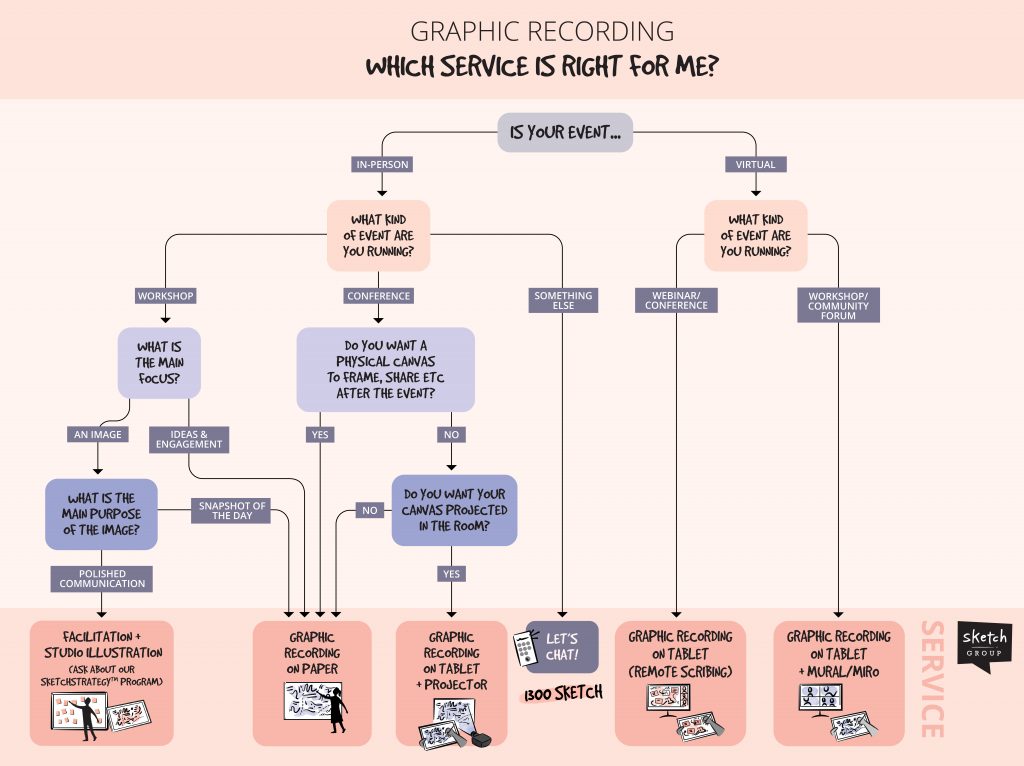Updated September 03, 2024
Graphic Recording: What It Is and How It Works
What is Graphic Recording?
Graphic recording, also known as sketchnoting, live scribing, visual note-taking and graphic facilitation, is the process of capturing and representing information visually in real-time.
A graphic recorder listens, synthesises, and captures key points on the page. They combine words, pictures, and other visual elements to visually summarise what they hear. There are a bunch of ways that this can happen.
In this article I’ll break down all of the different mediums, tools, and logistical setups in which a graphic recorder might operate.
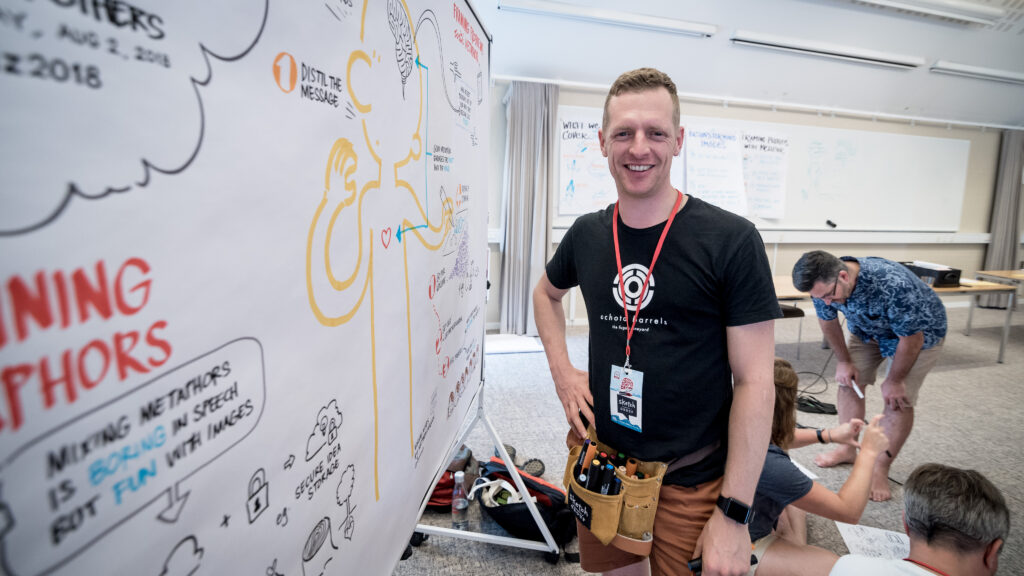
Why Use Graphic Recording?
Graphic recording can be a powerful tool for enhancing engagement, gathering group sentiment, promoting creative thinking, and facilitating effective communication in various contexts.
Our clients use graphic recording during meetings, workshops, conferences, and brainstorming sessions. It can be employed in business meetings, educational settings, community gatherings, and professional conferences. The visual recordings serve as a visual aid and a means of capturing and retaining information, facilitating better understanding, engagement, and communication among participants. We’ve graphically recorded events in the education, government, finance, not-for-profit, technology, and health industries, as well as strategic workshops in other sectors.
How Does Graphic Recording Work?
Graphic recorders work in a number of mediums, with a range of tools, depending on the context and the client’s preferences. Think of these as the six seven lenses through which the service can be viewed. A graphic recorder may work:
- small or large
- virtual or in-person
- physically or digitally
- actively or passively
- live or after-the-fact
- from audio or sticky notes
- in 2-dimensions or 3-dimensions
If you’re looking to engage a graphic recorder, these are the options for how they might work with you—the different ways in which they could add value. Let’s look at each of them in turn:
Small vs. Large Graphic Recording
Small
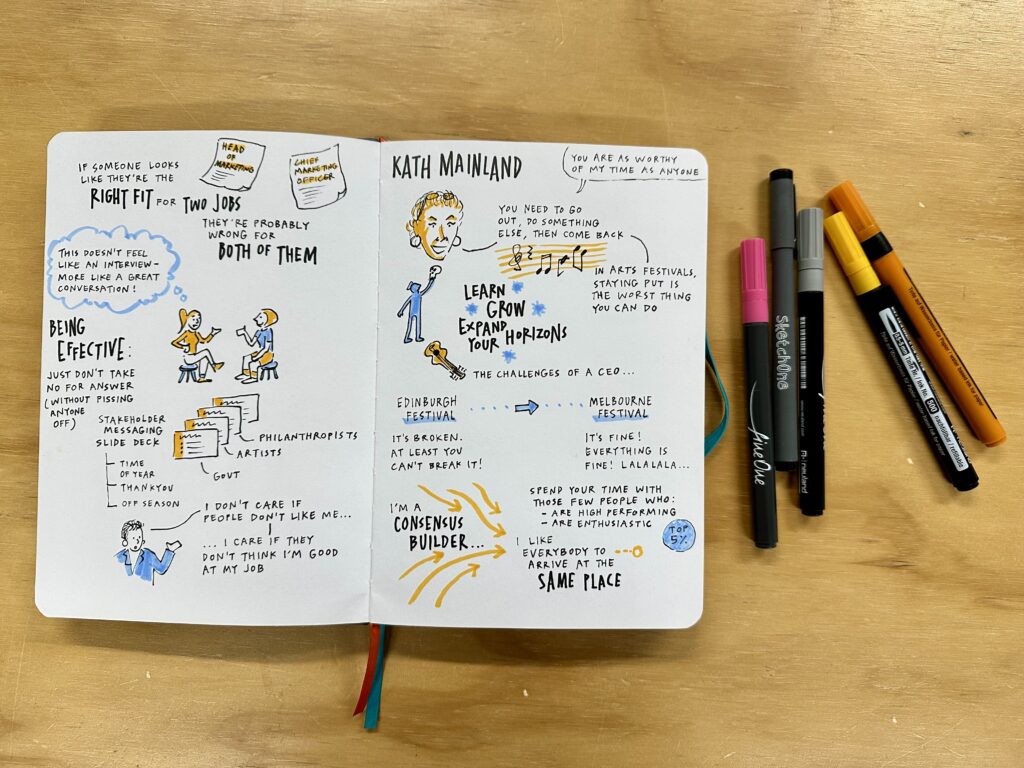
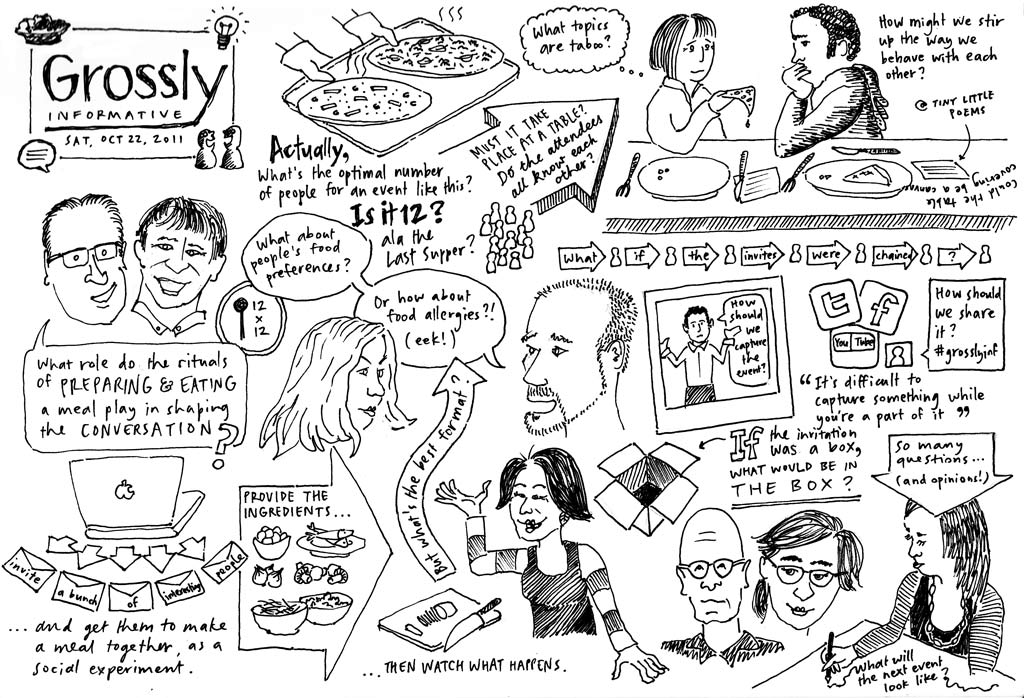
Typically, working small is referred to as sketchnoting, and the finished canvas is a sketchnote. The benefit of a sketchnote is that it can be done unobtrusively—the graphic recorder may be seated with the rest of the audience, with a sketchbook or iPad on their lap.
The big downside of this approach is that nobody else can see the sketchnote as it comes to life, which is part of the appeal in the first place. The one exception to this is when the sketchnote is created digitally (small) and simultaneously projected to a screen (large).
Large
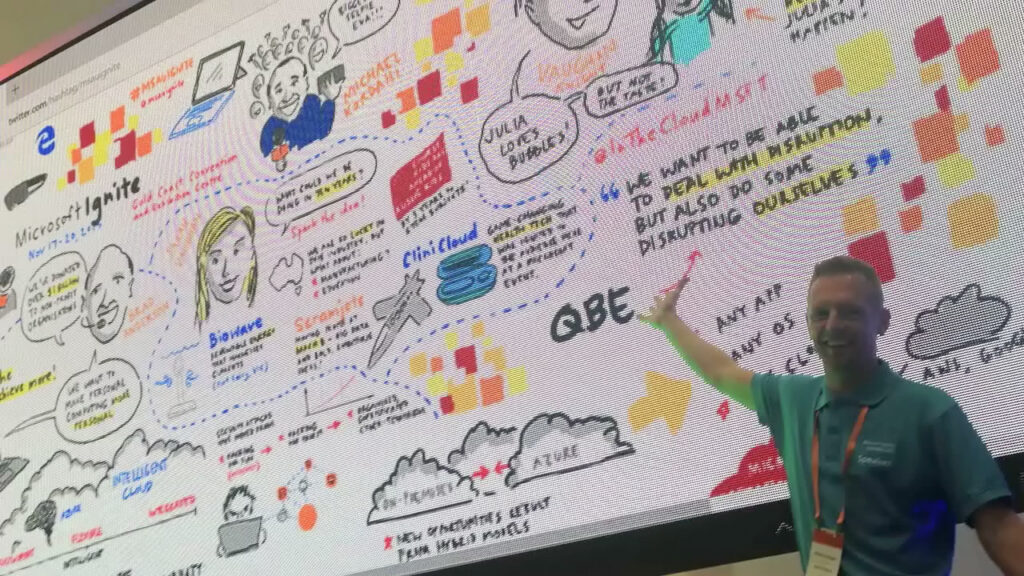
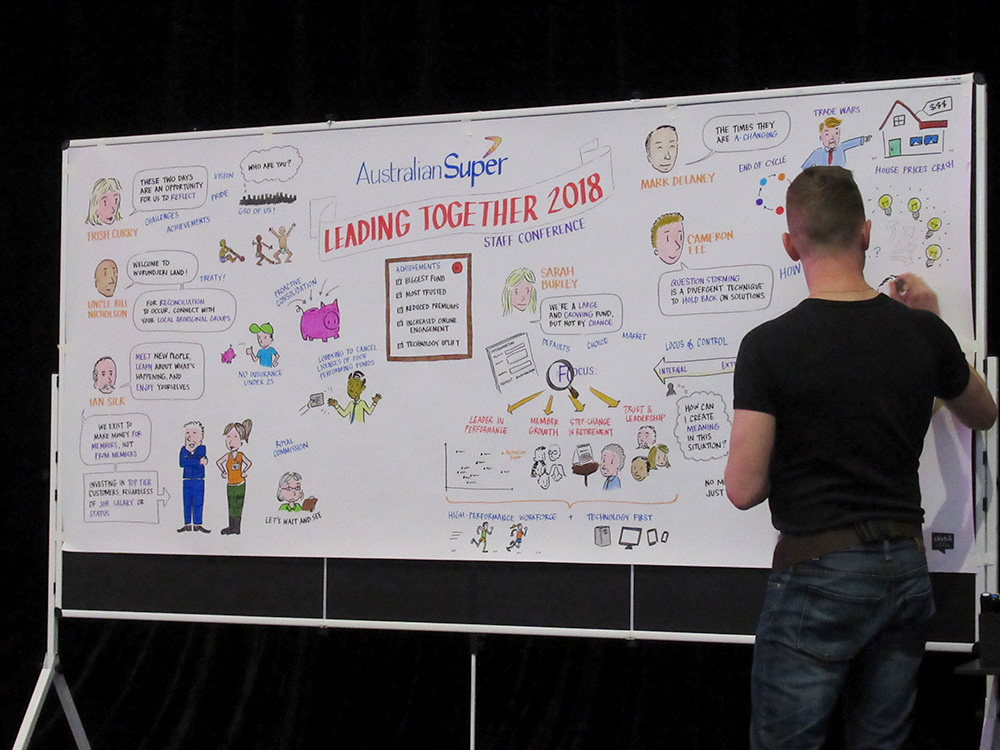
When the phrase graphic recording is used, most people are referring to visual notes that are created on a large scale. The capture may happen on a roll of paper, a whiteboard, foam core, a TV screen, or some other surface. The main point is that the drawing happens at scale, so is highly visible to people, even if they are seated far away.
The benefits of working large are many:
- participants can see the canvas come to life
- it looks impressive (the bigger the better!)
- the canvas can be admired by participants in between sessions
- can be photographed for sharing digitally or printing
Virtual vs. In-person Graphic Recording
Virtual
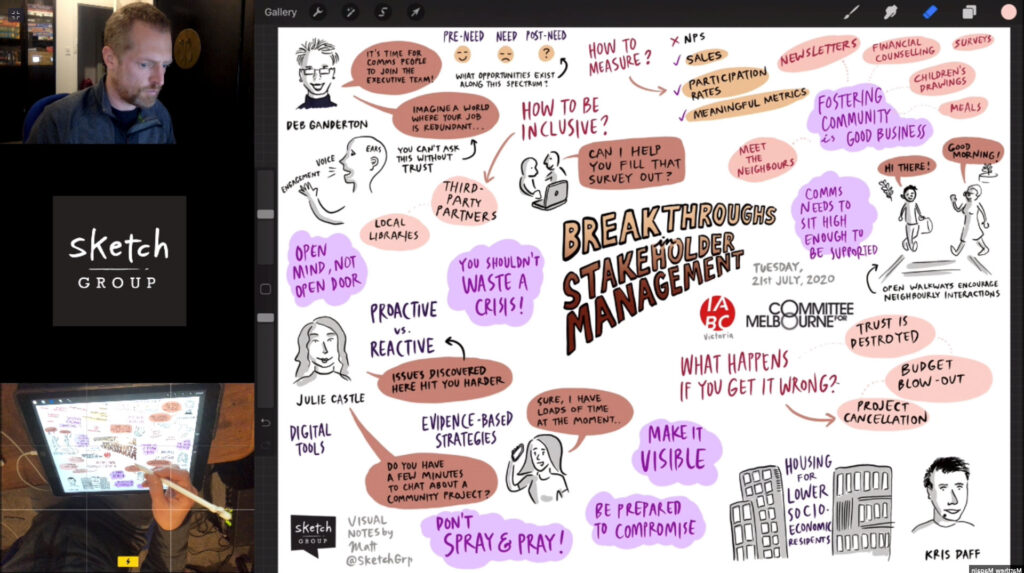
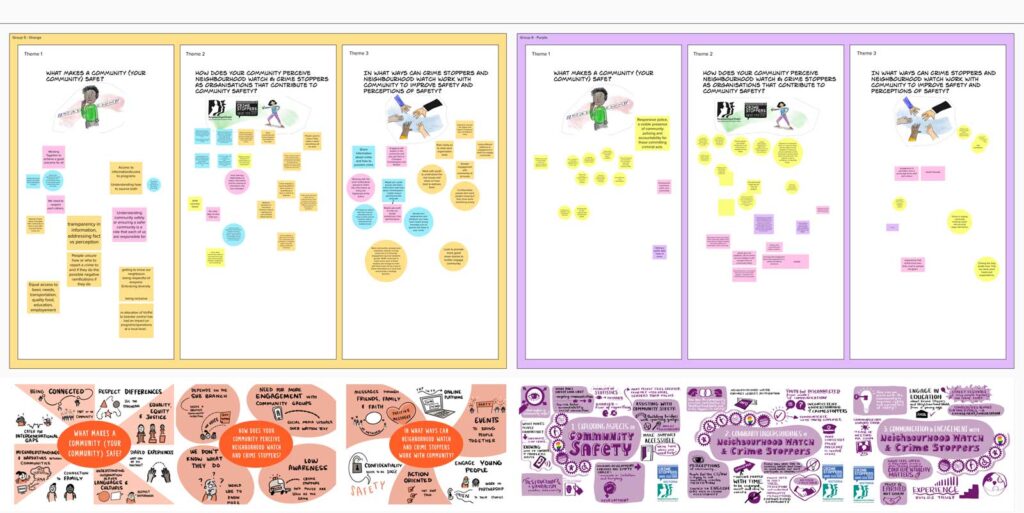
When the Covid-19 pandemic hit, working from home and virtual meetings were normalised. We expanded our offering during this time to include the capture of virtual meetings on a tablet device like an iPad in a way that adds huge value for participants and event organisers. We’ve dubbed this service remote scribing.
There are a number of options for how best to integrate a remote scribe. Should you engage us to capture a virtual event (or a hybrid event, which caters to both in-person and remote attendees), we’ll collaborate with you in the lead-up to the event to determine exactly what the right solution is for your event, based on the make-up of your technology, the agenda, and your goals for the session.
In-person
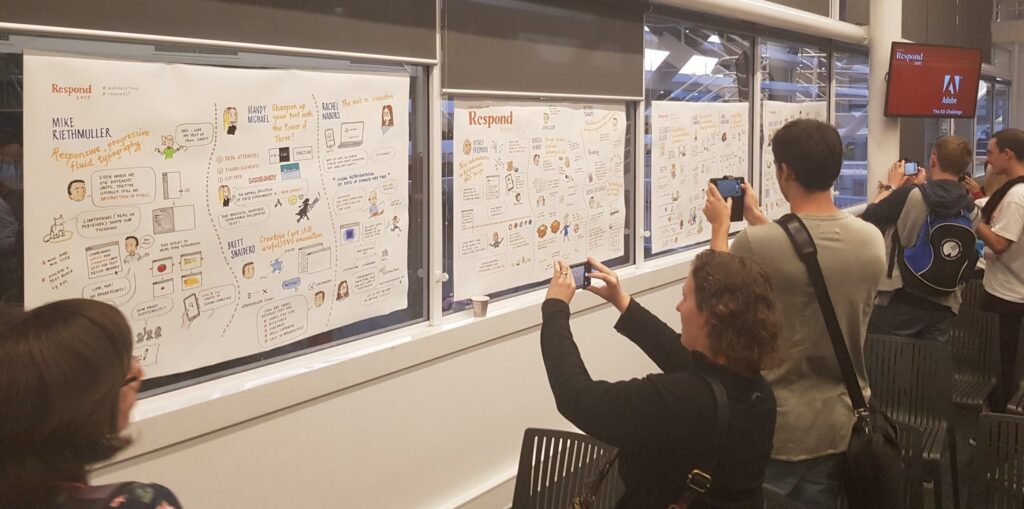
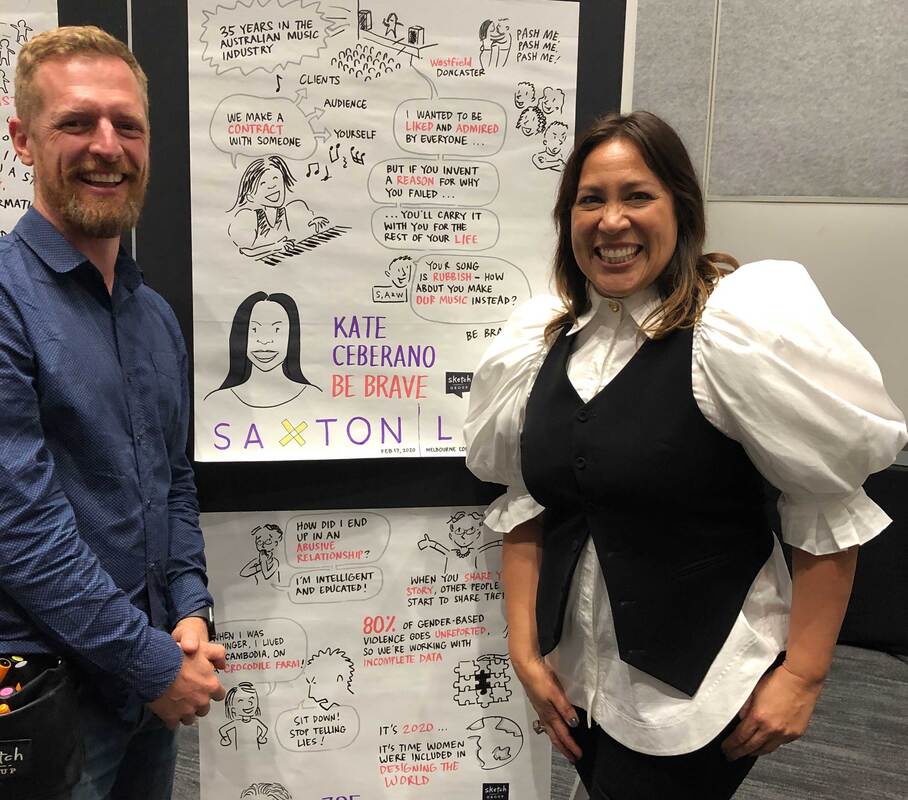
When everyone is in the same room, the benefits of graphic recording can be fully appreciated by participants—especially if it occurs on a large canvas. They can get up close to the canvas, take selfies in front of it, and are often mesmerised by watching it come to life. If it’s a physical canvas, it may be taped to a wall or partition or it may be attached to one of our portable GraphicWalls.
And while the canvas is the hero (the product), in fact the very presence of someone taking visual notes can fundamentally alter the dynamic of an event (the process). Seeing someone draw in real time is a bit like getting a peek into their brain and seeing how they think! Graphic recorders love learning new things, and we’re always excited about being in the room with you and helping make your event a success, which also contributes to positive energy in the room.
Physical vs. Digital Graphic Recording
Physical
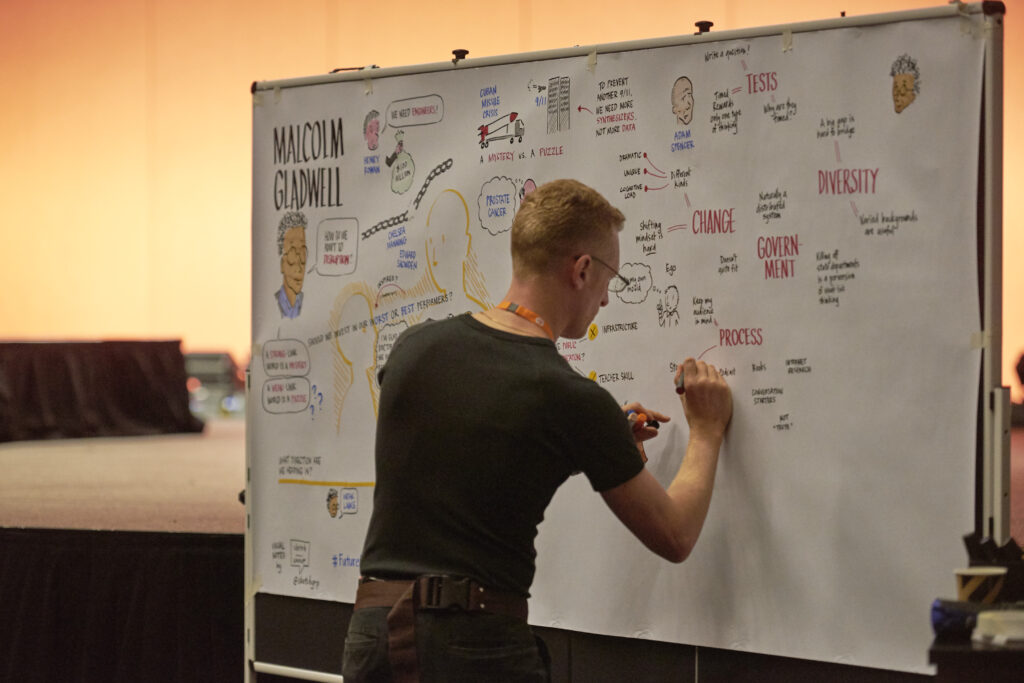
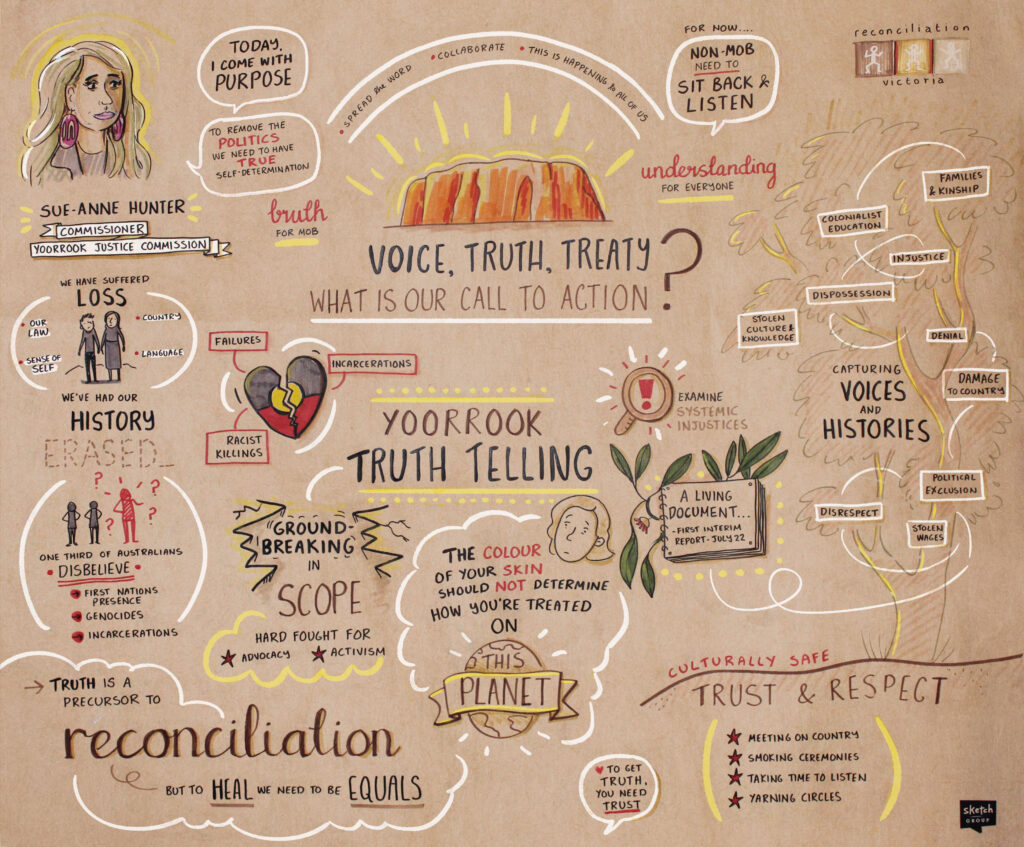
There’s something nostalgic about working with pen on a large sheet of paper. Most of the events we capture are on paper for this reason—attendees are mesmerised by the act of creation happening in the moment often without the option of using an eraser. We listen, synthesise, and capture permanently, and there’s no turning back.
This seemingly magical ability to produce an artefact that you can then take home or hang up in your office as a work of art is a huge part of the appeal! Occasionally we will work on a different surface, such as a whiteboard or foam core (corflute) but for the most part the portability and “wow factor” of a large sheet of paper wins out.
Digital

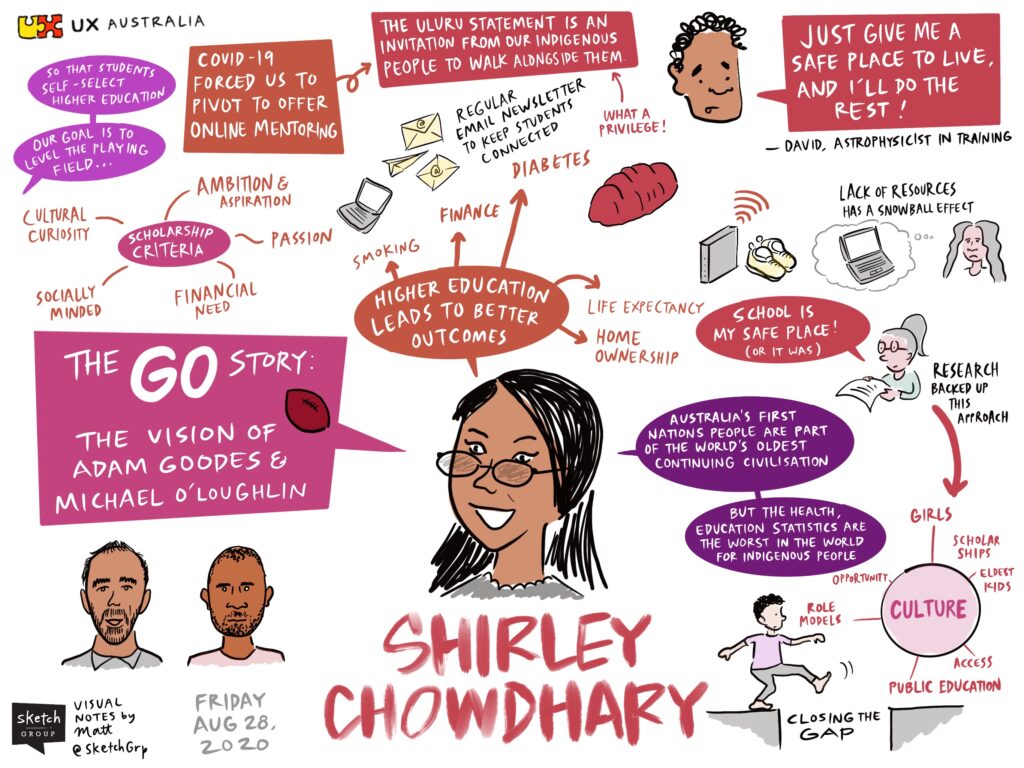
While the obvious choice for a remote meeting is to work digitally, digital capture is not used exclusively on remote events—our graphic recorders often work in the room, capturing the event on a tablet device, and project it onto a wall or large screen throughout the day (which may require the help of a venue’s audio-visual support team).
While we have a fondness for working on large paper, sometimes working digital is a better fit for an event.
For example, groupwork can often be messy and chaotic—in this instance, the graphic recorder takes more of a facilitation role (hence the term graphic facilitation) and makes changes to the canvas in real time, evolving the artefact to match the evolving decisions that are made by the group.
Active vs. Passive Graphic Recording
Active
As mentioned above, graphic facilitation refers to situations when the graphic recorder acts more like a co-facilitator, interjecting to gain clarification from the group, and sometimes even leading the conversation. The canvas is more of a co-creation by the group than a single person’s interpretation of the conversation—sometimes quite literally, when group members are also making marks on the canvas. This collaborative approach to problem solving usually works best when the graphic facilitator partners with an experienced front-of-room facilitator.
Passive
Alternatively, passive graphic recording is when the illustrator acts as a silent “fly on the wall”, playing the role of visual translator, processing what they hear and summarising it with visuals based on what they deemed to be important.
This works well for plenary presentations at conferences, as well as panel discussions. The graphic recording offers an alternative way for the audience to consume the content, as well as delivering a useful artefact to reflect on afterwards.
Live vs. After The Fact Graphic Recording
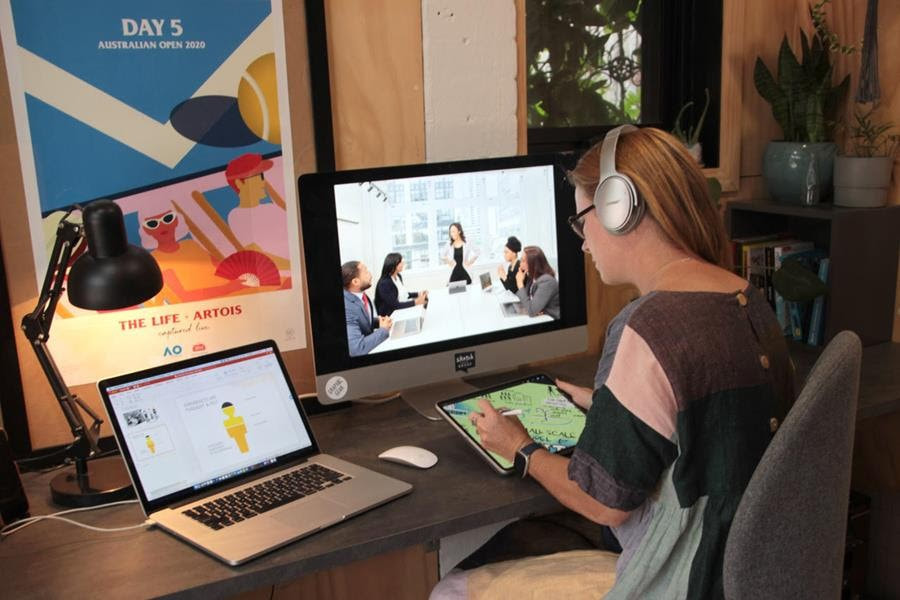
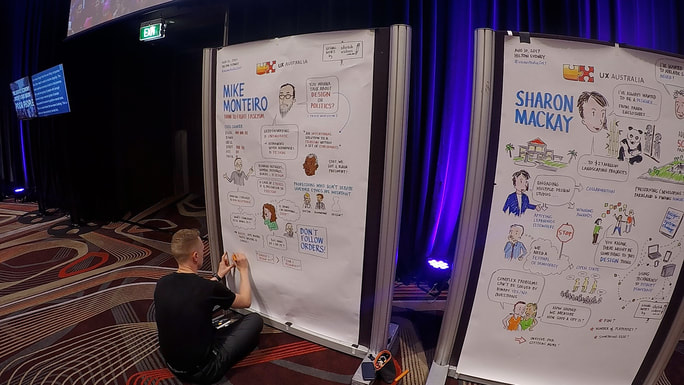
Live
As mentioned previously, the process of having a graphic recorder in the room is as important—and sometimes more important—than the physical artefact (the product).
For this reason, we are strong advocates for, whenever possible, having your graphic recorder work live and be visible at your event. The graphic recorder feeds off the energy of the room, and becomes an integral part of the day.
After the fact
That said, sometimes it’s just not possible to have a graphic recorder in the room (there may be logistical hurdles, or cultural challenges, or perhaps the event has already happened in the past).
In this instance, we’re happy to work from a video or audio recording to create a canvas. This visual summary will appear to have been created on the day. While the value for participants of the canvas being created in front of them in real time is lost, sometimes it’s the only option and creating it after the fact is the next best thing. Note that due to the logistics involved in this activity, pricing for graphic recording services that occur after the fact may differ from those delivered live.
Audio vs. Sticky Notes Graphic Recording
Audio
Most of the time, the primary input that a graphic recorder will use to create their canvas will be based on audio. By that, I mean they will:
- listen deeply to the presentation, workshop, or panel discussion,
- process, prioritise, and synthesise what they’re hearing, and
- create a summary on the page using words and pictures
Sometimes, however, it’s just not possible for us to work in this way. For instance, when there are multiple conversations happening at once, it’s impossible for a graphic recorder to listen to multiple audio inputs (or be in different breakout rooms) at once.
Sticky Notes
If your workshop includes breakout activities (either on tables in the same room, or in virtual breakout rooms) then there are a few options. You could engage multiple graphic recorders, as this is the best way to ensure that all attendees feel like their voices have been heard. However, having multiple graphic recorders attend the one event can, however, get expensive.
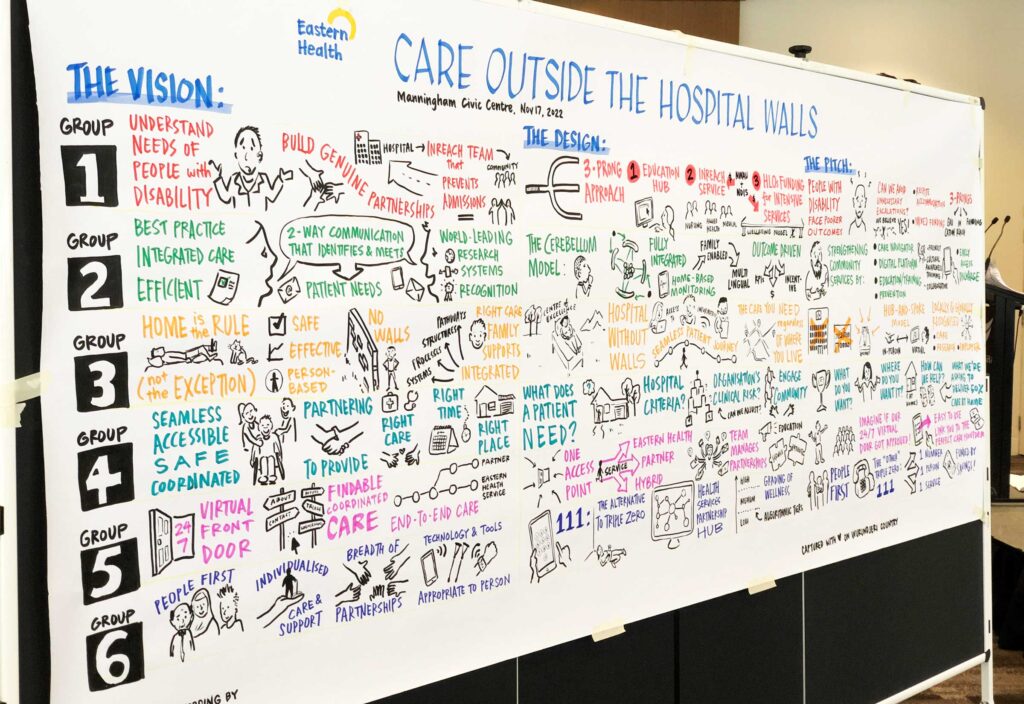
If you’re working to a budget, an alternative is to have the graphic recorder use the sticky notes that the attendees create during the activities as an input to the canvas, instead of listening directly to the conversations. Capturing an workshop using this approach requires significant planning and close collaboration with the facilitator and event support team for it to work successfully—the graphic recorder will need a team to support them with collecting, transporting, organising, and labelling the sticky notes to avoid an overwhelming mess.
And it’s not just in-person workshops to which this approach can be applied—using online collaboration tools like MURAL and Miro, we’ve worked with clients to capture the contributions from groups based on the virtual sticky notes that they’ve created on the collaboration canvas.
While it’s not ideal, when executed well, working from sticky notes can be a good compromise.
2-dimensional vs. 3-dimensional Graphic Recording
2-dimensional
All of the examples I’ve listed to date are obviously 2-dimensional—capturing content on a flat surface. The benefits to working like this are obvious: the setup is usually fairly straightforward, it can be viewed easily by others in the room, and the artefact is easy to transport, photograph, and share. But are there occasions when an alternative is an option?
3-dimensional
Yes, it is in fact possible to graphically record an event in 3 dimensions! We call it VR Sketchnoting, as it uses a Virtual Reality headset and a 3D drawing tool. The technical requirements are significant, but in some instances, capturing content in 3 dimensions makes perfect sense (for instance, when we graphically recorded a conference about virtual reality, using virtual reality).
It’s also possible to incorporate Augmented Reality into a 2-dimensional graphic recording canvas, blending the best of traditional graphic recording with the spatial possibilities that technology enables.
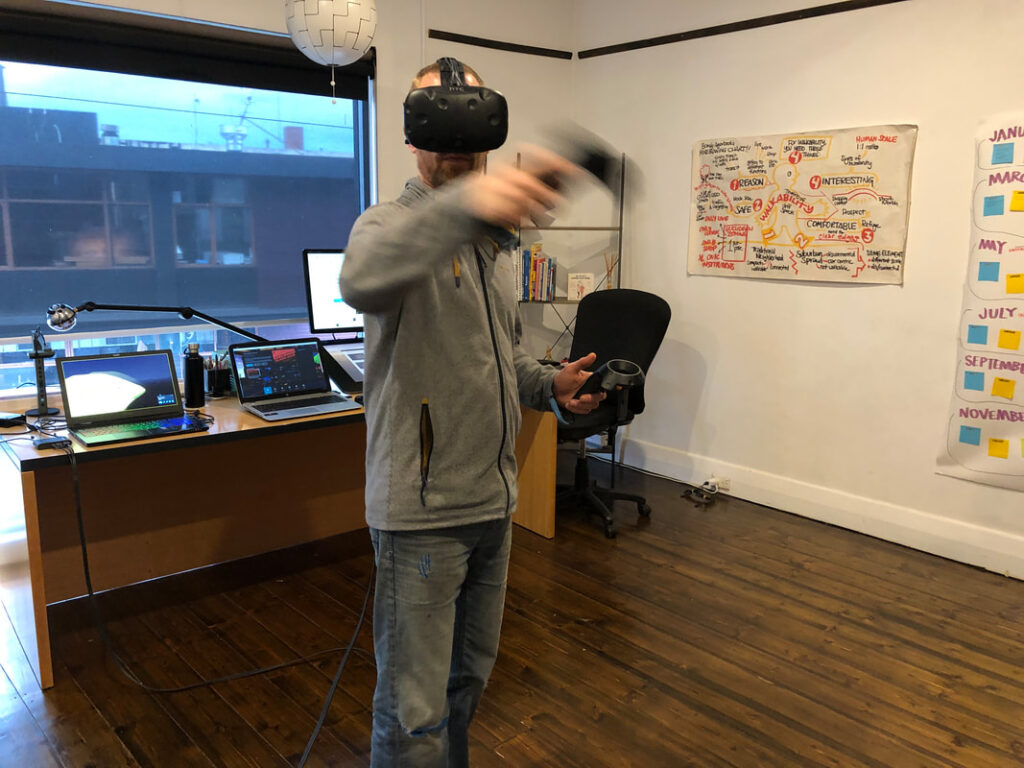
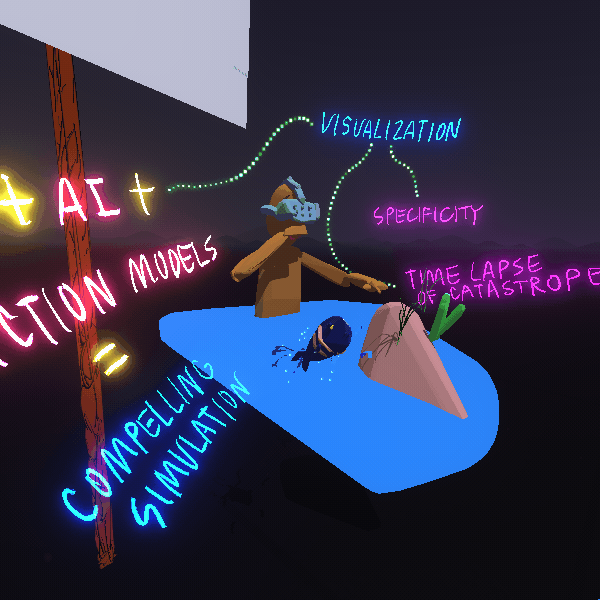
How Do I Know What’s Right For Me?
Once you’re aware of the many options, it can be a little overwhelming trying to think through the benefits and figure out which one is right for your event. Fear not—we’ve got your back! We created a handy-dandy flow chart that you can step through to give you some direction.
Of course, there are other factors too, such as how you intend to use the canvas after the fact. The easiest thing to do is just give us a call and we can talk you through it.
Can You Teach Me How To Do Graphic Recording?
Yes! We regularly teach in-house visual thinking courses for groups of eight or more. Students love our training courses and often report that embedding visual thinking in an organisation leads to a more collaborative and creative work culture!
We love empowering people with the skills to think, communicate, and collaborate better, and have taught workshops in over six countries. We’d love to work with you too.
Read more about our sketchnoting and graphic recording courses here.
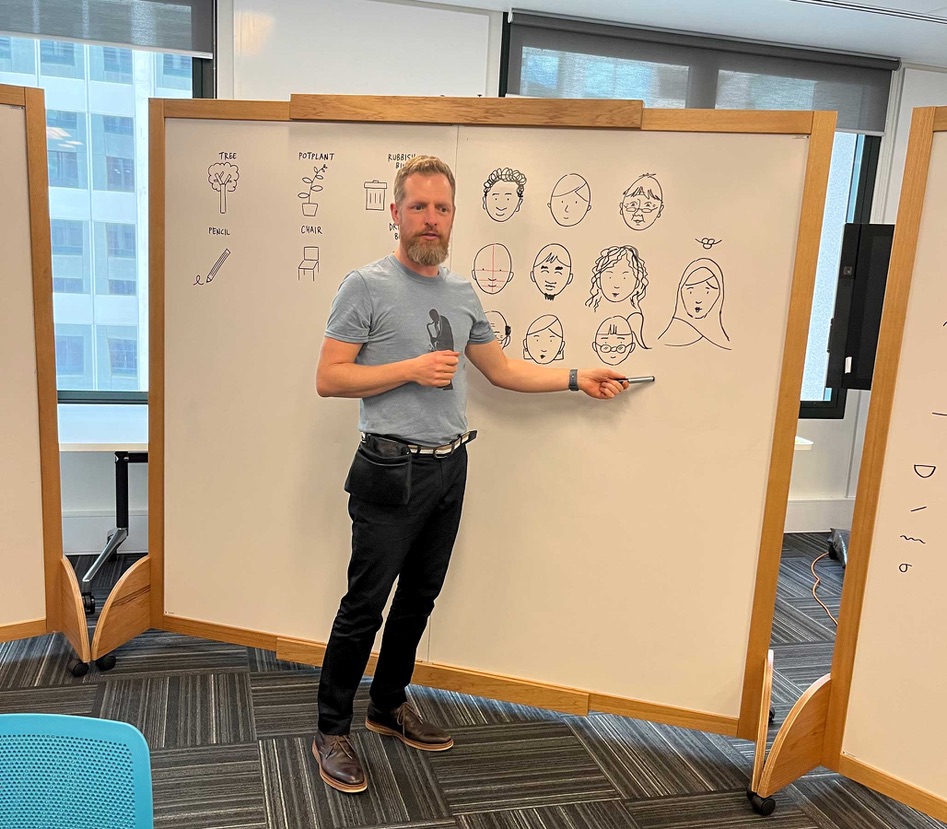
Why Choose Sketch Group for Graphic Recording?
- We are experts at simplifying the complex. Our years of experience means we’ve established ourselves as an authority in the visual thinking space—and our client list reflects this.
- We’re Australia’s largest agency of visual practitioners, which means we have the capacity to deliver, and can offer a wide diversity of styles.
- Our founder, Matthew Magain, has delivered workshops in six countries, contributed to several books, and is regularly interviewed on podcasts about visual thinking. He lives and breathes this stuff!
- Arming people with visual skills to better think, collaborate and communicate is what drives us, so we love what we do.
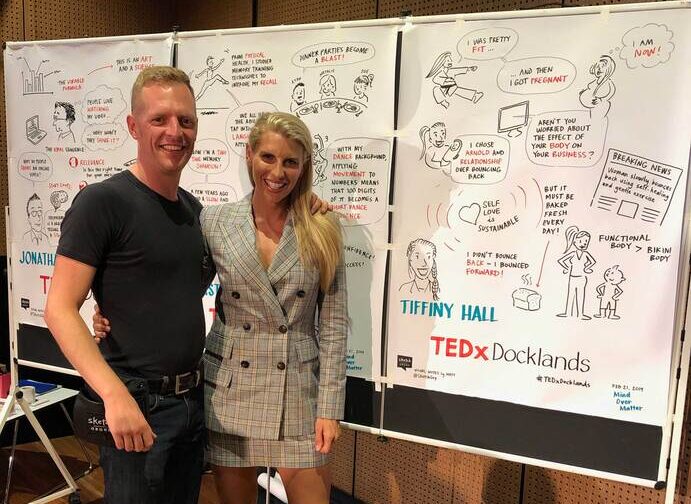
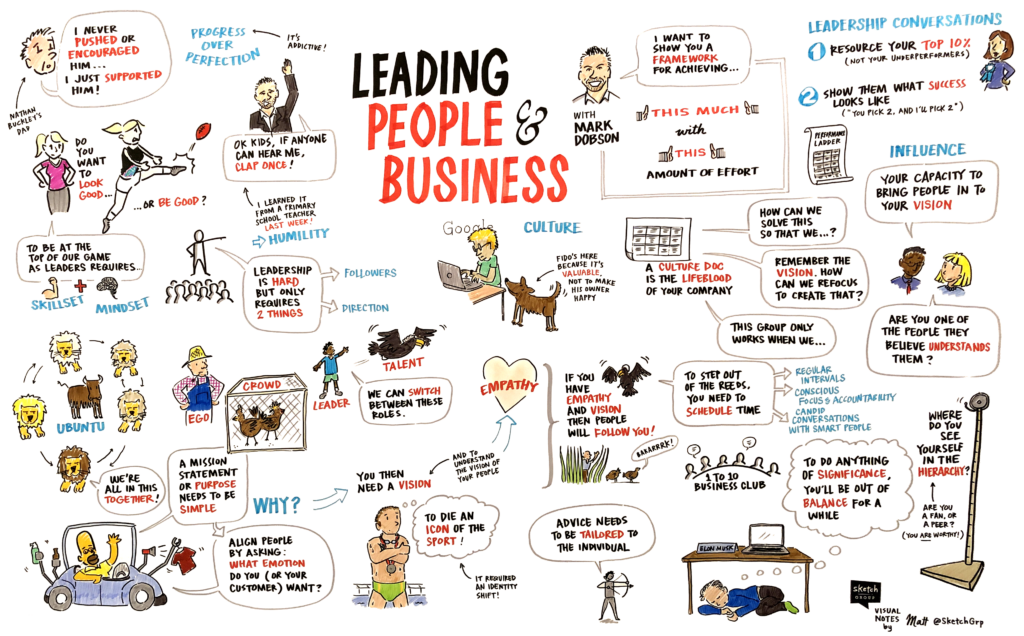
Get In Touch
Keen to learn more? Shoot us a message via our contact form, or give us a call on 1300 SKETCH.

